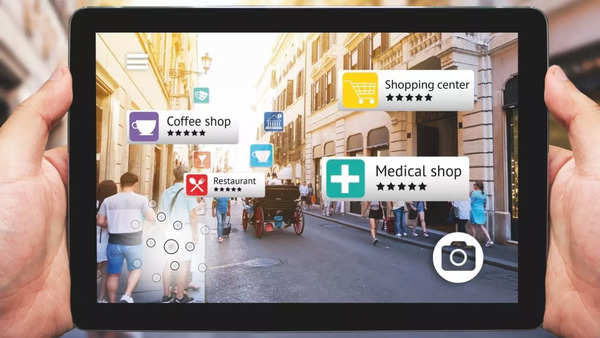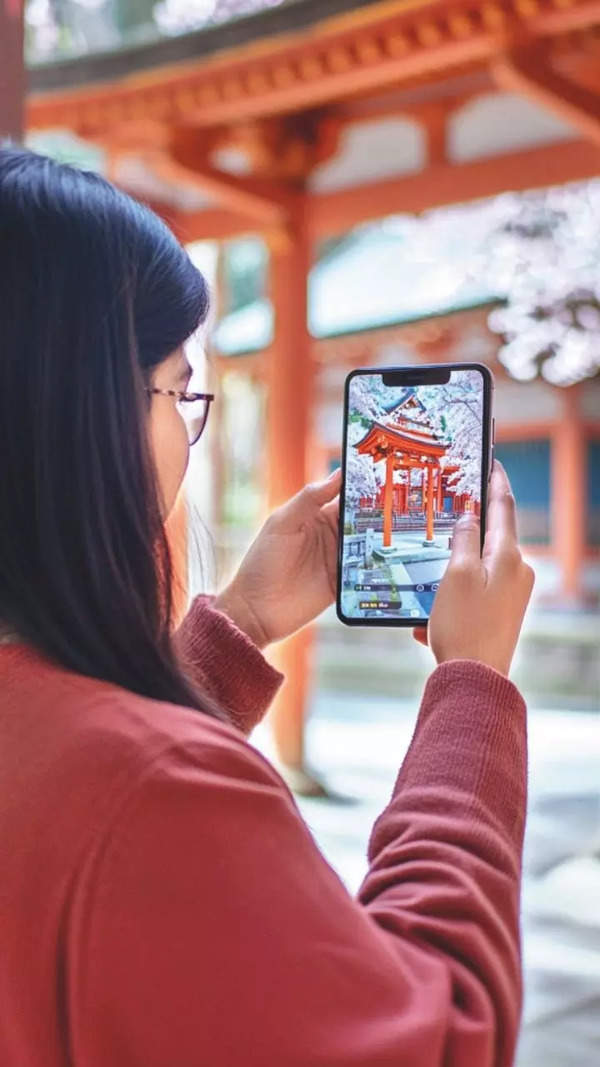Imagine visiting the Colosseum in Rome and watching gladiators fight, and the crowd cheer. Or, strolling through the gardens in the historical city of Kyoto and experiencing a grand tea ceremony. All but with the help of Augmented Reality (AR). With tech increasingly becoming a part of travel, and travel becoming all about “experiences”, the world of AR is helping to make travelling more immersive by blending the physical and digital worlds.
What is Augmented Reality?
At its core, AR is a technology that superimposes computer-generated images, sounds, or sensory data into the real world. Unlike Virtual Reality (VR), which immerses users in a completely fabricated environment, AR enhances the physical world, making your surroundings interactive and engaging in real-time. For travel, AR offers travellers an extra layer of engagement with the world around them that can be accessed through apps, and AR glasses.
How does AR help in enhancing your travel experience?
*
Brings historical sites to life with interactive 3D visualisations
*
Provides navigation aids for visually impaired travellers
*Makes travel more engaging and accessible, overcoming challenges faced by tourists
*
AR apps help travellers understand foreign languages – from menus to street signs through real-time translations
(With inputs from Suresh Iyer, co-founder of an AR travel app)
AR can instantly translate menus or signboards. We’ve even incorporated accessibility features to guide visually impaired travelers, so they can explore independently and confidently
Suresh Iyer, co-founder, an AR travel app
Before travelling, check if your destination offers AR experiences. Many cities and tourism boards are partnering with AR companies to provide these digital guides and immersive experiences
Vani Sharma, a travel experience designer

An AR app helping a tourist navigate (Image: iStock)
Here’s what AR apps can help you with:
*
Navigation
*
Gettinghistorical insights with the help of a scan
*
Virtual guides and animated stories
*
Translation
*
Capturing and booking travel experiences in 3D, by creating a personalised digital memento of your trip
(
With inputs from Yashagya Handa, senior engineer, Google Lens, an AR travel app)
With AR, you don’t just look at the landmarks, you get to know about the events that made those places significant
Kanika Verma, digital tourism strategist
A mini guide to help you in your next trip
*
Download AR apps:
Popular apps like Google Lens, AR City, and History Here offer interactive maps and virtual tours
*Explore location-specific AR experiences:
Cities like Paris and Rome provide AR guides with rich historical content
*Use interactive features:
Enjoy virtual historical tours and other immersive AR features to enhance your sightseeing experience
(With inputs from Vani Sharma, a travel experience designer)

A woman using AR to enhance her trip to Japan (AI generated image for representational purposes only)
Cities leading the way with AR travel
*Rome:
Offers AR experiences that let you see the Colosseum in its prime
*Paris:
AR-enhanced tours of the Louvre for an immersive experience
*Kyoto:
AR apps allow visitors to step into traditional tea ceremonies and explore the historical gardens
*New York, London, Tokyo:
Using AR to provide immersive travel experiences across key landmarks
*Dubai:
Using AR to visualise futuristic attractions and developments
I wanted something more than the usual fridge magnets. With AR, I could capture moments digitally, like a virtual journal. I even brought home a 3D image of a Japanese temple, it’s my favourite souvenir from the trip
Priya Yadav, travel blogger who recently visited Kyoto
This post was originally published on here







